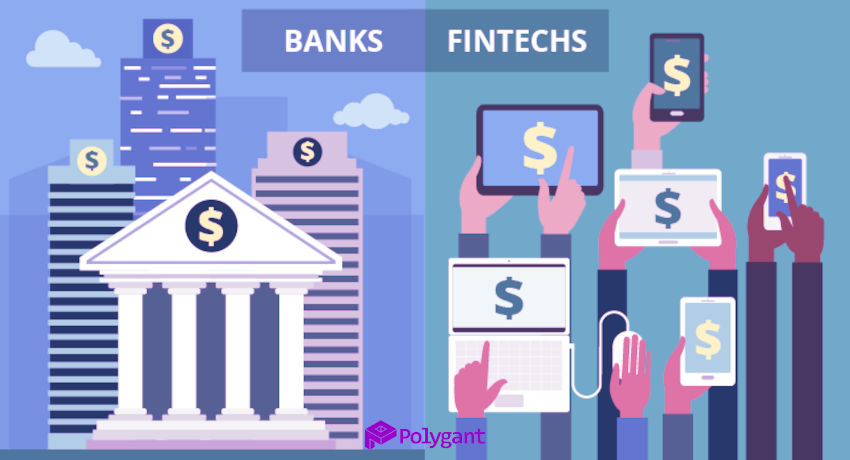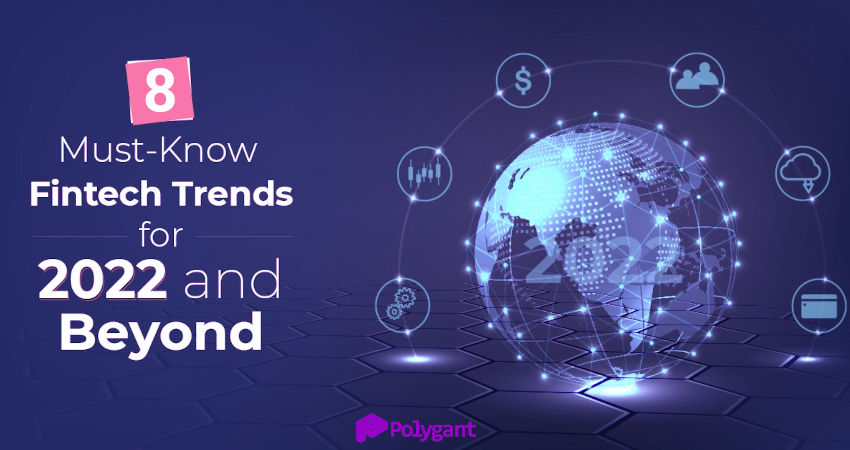Since the early 2000s, the United States has been supplying the world with innovative projects. It was in Silicon Valley that ‘disruptive innovations’—new technologies that changed the field of financial services—began to emerge. The first business models were marketplaces and online trading.
Today, the largest tech companies in the world—Alphabet, Amazon, Apple, Meta Platforms, Microsoft—are also based in the U.S. However, every year notable participants from other countries appear on the market, for example: Ant Group and JD Technology from China, Paytm from India, Gojek from Indonesia. They are changing financial and technological trends, creating new technologies, and improving existing ones.
What technology banks and fintech startups used in 2021
Fintech startups and tech companies compete strongly with traditional financial institutions: they bring new products and services to market faster, modernise classic business models, and offer services in many areas, including areas that banks do not have access to. In order not to fall behind in such tough conditions and not to drop out of the market, banks are also using new technologies. To do this, they not only buy promising startups or conclude cooperation agreements, as JPMorgan and Goldman Sachs do, but also create fintech divisions within banks.
For example, Emirates NBD Bank created 3 zones in its branches in the UAE:
- Digital banking — customers independently obtain information and order services using info kiosks or other digital technologies.
- Banking of the future — innovative financial products are concentrated here.
- Financial advice zone — customers discuss financial issues with bank consultants.
Another example: Clydesdale Bank (Scotland) and Yorkshire Bank (England) created Studio B financial labs in their branches. They develop innovations, such as screen tables that can be transformed into multiple touch-screen info panels.
Today, fintech and techfin companies offer a variety of financial services that operate on the basis of trending technologies. Let’s list those that were more actively used in 2021.
Artificial intelligence
AI makes financial products and services as personalized as possible, which ultimately increases customer loyalty. Previously, the personal approach was available only to VIP customers, but today — to everyone. Boston Consulting Group cited a study, according to which 54% of customers take into account the level of personalization of service when choosing a bank, and 41% of respondents said that they switched to another bank because of insufficient personalization.
In addition to fintechs and techfins, banks are the biggest sponsors of AI development. There is even a separate direction — AI-in-FinTech, which today is estimated at $5.5 billion. That’s what AI does there:
- Reminds you of upcoming payments;
- Warns before an overdraft;
- Deals with pricing;
- Provides financial advice and guidance;
- Assesses creditworthiness.
For example, the AIs at Amazon and Netflix analyse a user’s habits and then not only offer them the relevant product or content, but also do so at a time when the user is ready to buy.
Big data
This is the name given to data of huge volumes, technologies of their processing, and ways to find the necessary information in large arrays. Financial companies analyse data from online documents, social media, audio and video recording devices, and bank card transactions to identify new categories of customers and offer them special services.
For example, seeing from the transactions that the client often pays with the card in different cities, the bank concludes that he/she is a traveller. In the future, the company will offer him/her a card with the ability to save miles for flights. Big data has also proven useful in credit scoring and anti-fraud systems.
Internet of Things
This concept allows you to connect multiple devices into a single network. Interacting with each other or the external environment, they collect, analyse, and transmit data. For example, customers can contact the bank and manage their accounts through smartwatches, smartphones, and tablets.
Citibank’s branches are equipped with biometric and positional sensors, which, together with video cameras, recognize clients as they enter the offices. The specialists that this client needs are notified of their arrival, and the consultation goes faster. Citibank clients can also open doors to ATM halls using their smartphones.
Biometric authentication
This is the verification and admission of the user by biometric data: fingerprints, retina or iris, facial thermogram, hand or face geometry, voice, gait, and other characteristics.
British bank Barclays uses Nuance FreeSpeech voice recognition, which recognizes clients from the first seconds of their conversation with an operator. Barclays says the technology reduces the time required to authenticate clients from 90 to 10 seconds. TD Bank, together with MasterCard and tech company Nymi, created a contactless payment wristband that recognizes clients by their heart rate.
Contactless payments
They work by reading information over a radio signal. An example of use in the financial sector is contactless payments using smartphones, smartwatches, bracelets, and key fobs with a built-in NFC chip.
People have been actively using contactless payments for a long time, but some consider it an inconvenience to have to enter a PIN code when paying more than the minimum secure amount. The Norwegian fintech company Zwipe solved the problem by issuing a contactless debit card with a fingerprint sensor. When paying with this card, the holder presses his finger to the sensor in front of the chip and does not need to enter the PIN code. The fingerprint reference is stored inside the card chip, where the authentication takes place.
InsurTech
Most insurtech companies don’t sign insurance contracts and don’t pay insurance claims. About 60% of these organisations are tech companies that provide traditional insurers with analytical data, software, and equipment. For example, Xeddco’s Insurance Drip platform analyses a customer’s habits, helps insurers understand their interests, and informs them of opportunities to sell a policy.
Another 38% are marketplaces and websites for comparing insurance products. And only 10% of companies offer traditional insurance services. These include Collective Health, Hippo Insurance, Next Insurance, Spruce.
Which financial technologies will be trending in 2022
Financial technology is the most invested industry, accounting for $1 out of every $5 of global venture capital funding. According to CB Insights, for 2021, the volume of deals reached a record high, and the total financing amounted to $131.5 billion. That’s 168% more than for 2020 (then it was $49 billion).
Today, experts have different predictions for fintech trends in 2022. However, their opinions agree that these will dominate:
- Robotic process automation in online trading;
- Voice payments via intelligent virtual assistants;
- Cross-border payments in e-commerce (their total volume will reach $156 trillion in 2022);
- Neobanks — fintech companies that provide banking services only in a digital format;
- DeFi — decentralized finance;
- Web3 — the World Wide Web on a blockchain, with decentralization and tokenomics;
- Metaverses and virtual reality on blockchains;
- Central bank digital currencies.
Financial technology will continue to evolve and improve. Research organisations such as Research and Markets predict that the global fintech market will grow to $31.5 billion by 2026.


 Telegram
Telegram 
